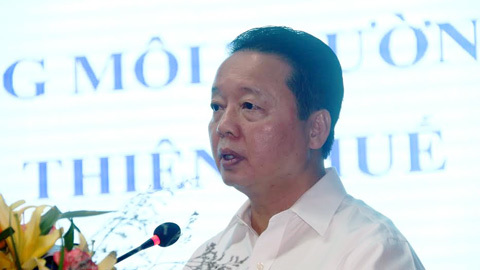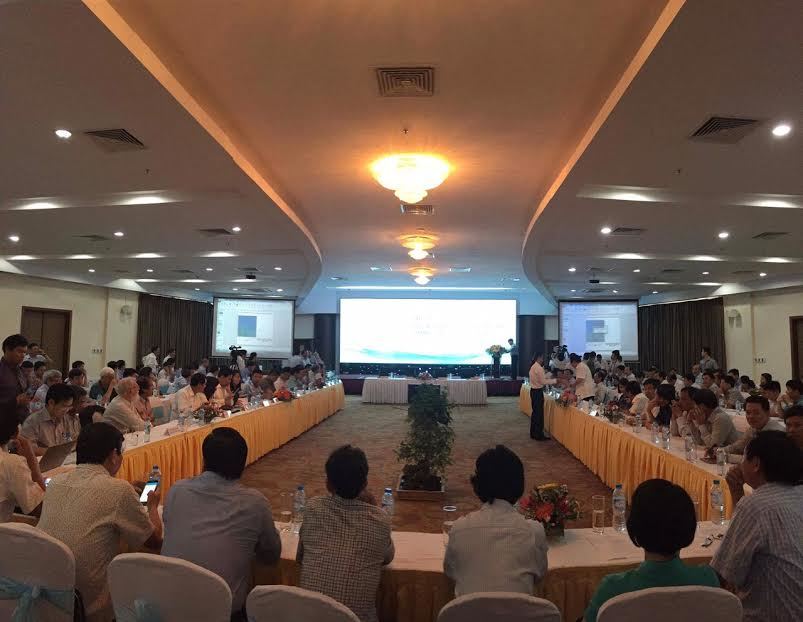Central Vietnam seawater 'meets standards' for bathing and aquaculture
Affirming that it had used many scientific assessment methods with the participation of domestic and foreign experts, the Scientific Council affirmed that the seawater parameters of the Central region are within the allowable limits for bathing, sports activities and aquaculture.
In his opening speech, Minister of Natural Resources and Environment Tran Hong Ha emphasized that after the environmental disaster that occurred in some central provinces, we are fully aware of our political responsibility to the people for the urgent need to quickly restore production and business activities, help fishermen continue to stay at sea, ensure people's livelihoods and safety, and must quickly investigate, evaluate and publish the developments, current status and quality of the marine environment during and after the incident.
“I have always been aware that announcing clean seas is very important and necessary to meet people's expectations of knowing whether the marine environment is clean, which sea areas are clean, which sea areas are not clean... so that people across the country can feel secure in production and fishing activities, and return to their livelihoods,” Minister Ha emphasized.
 |
Minister of Natural Resources and Environment Tran Hong Ha. Photo: Quang Thanh |
Prof. Dr. Mai Trong Nhuan (Hanoi National University) represented the research team to present the results of the recent marine environmental survey in 4 central provinces. After listening to the experts' opinions, Minister of Natural Resources and Environment Tran Hong Ha will preside over the Q&A session.
Mr. Do Huu Tuan, Deputy Director of the Department of Food Safety, Ministry of Health, will report on the quality and safety of aquatic and seafood products in four provinces.
Previously, in early May, the Ministry of Natural Resources and Environment took samples to monitor the quality of coastal seawater at 22 beaches in 4 provinces, including: Ha Tinh, Quang Binh, Quang Tri, and Thua Thien - Hue.
Initially, through comparing and contrasting the monitoring results with the National Technical Regulation on seawater quality (QCVN 10-MT:2015/BTNMT), it shows that the seawater quality at the above beaches is within the permissible limits.
The phenomenon of mass fish deaths in four central provinces began in early April, starting near the Vung Ang industrial park (Son Duong, Ky Anh, Ha Tinh), then spreading to the provinces of Quang Binh, Quang Tri and Thua Thien Hue.
 |
| Photo: Quang Thanh |
According to statistics, about 115 tons of natural fish from 4 provinces have washed ashore, Quang Binh has the most with 100 tons, the number that sank to the bottom has not been counted.
According to assessments, it will take half a century for the ecosystem in the above-mentioned central provinces to recover.
The incident directly affected more than 40,000 workers, forced 4,000 boats to stay on shore and caused heavy damage to the tourism industry when in 4 central provinces, the rate of tour cancellations reached 50%, room occupancy was only 40-50%, and in Ha Tinh, it was only 10-20%.
After many months of clever struggle, Vietnam forced Formosa to admit 53 administrative violations such as: Arbitrarily and illegally changing coking technology from dry coking technology (using inert gas) to wet coking technology (using water), not building a filter tank for the domestic wastewater treatment plant as committed...
By June 28, Formosa had signed an agreement to resolve the environmental incident in four provinces with five main contents: publicly apologize; pay compensation of 500 million USD; fix the waste treatment system; develop environmental control solutions and fully implement commitments to prevent recurrence.
On July 29, Minister Tran Hong Ha announced that Formosa had committed to transfer an initial compensation of 250 million USD to Vietnam.
According to Vietnamnet.vn

